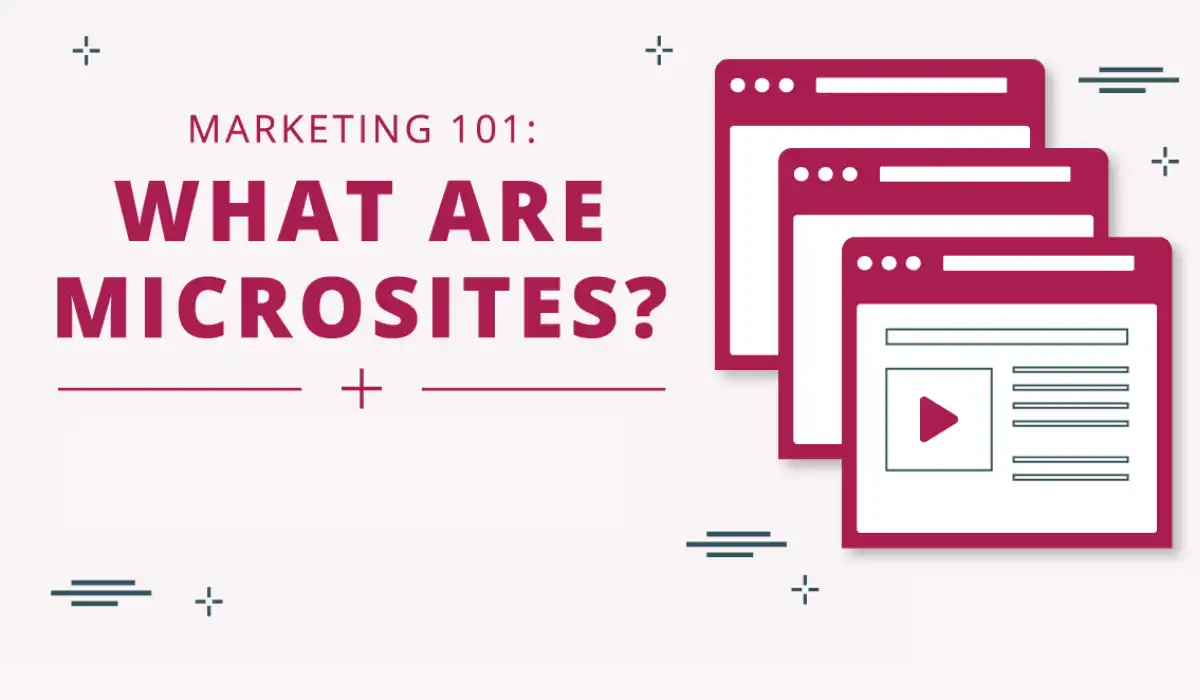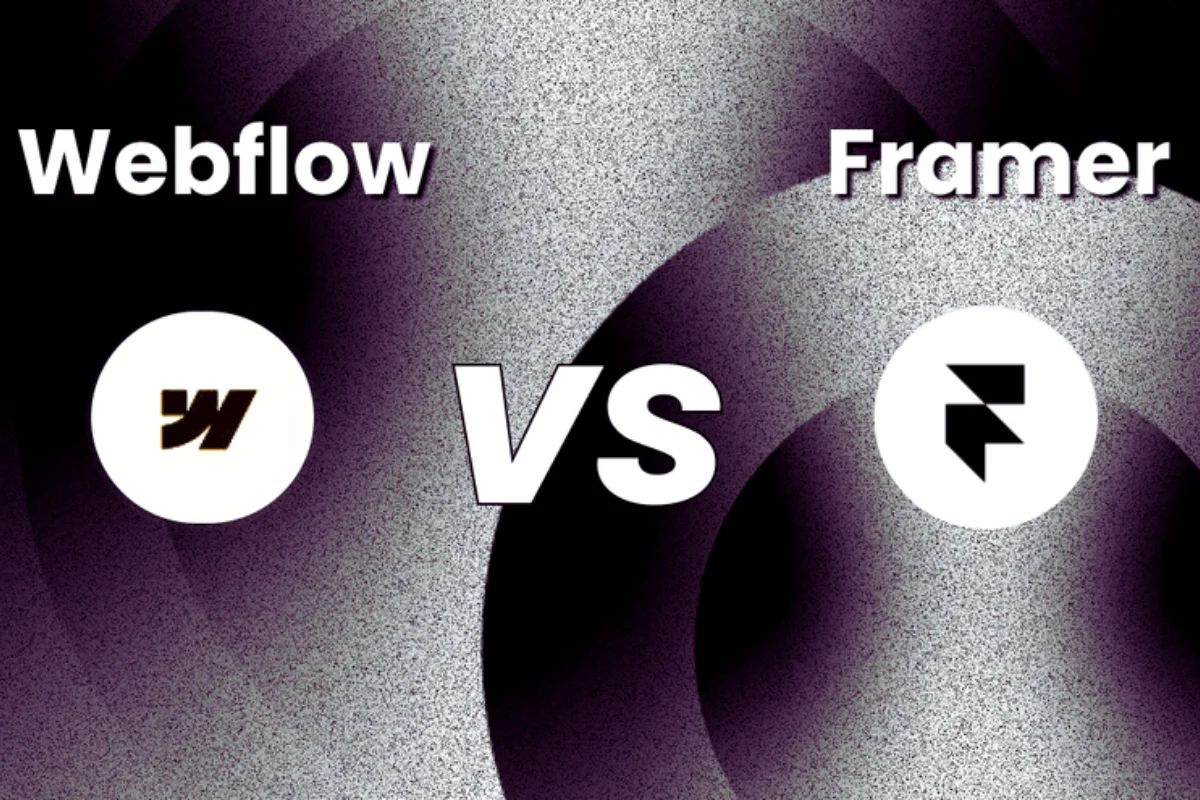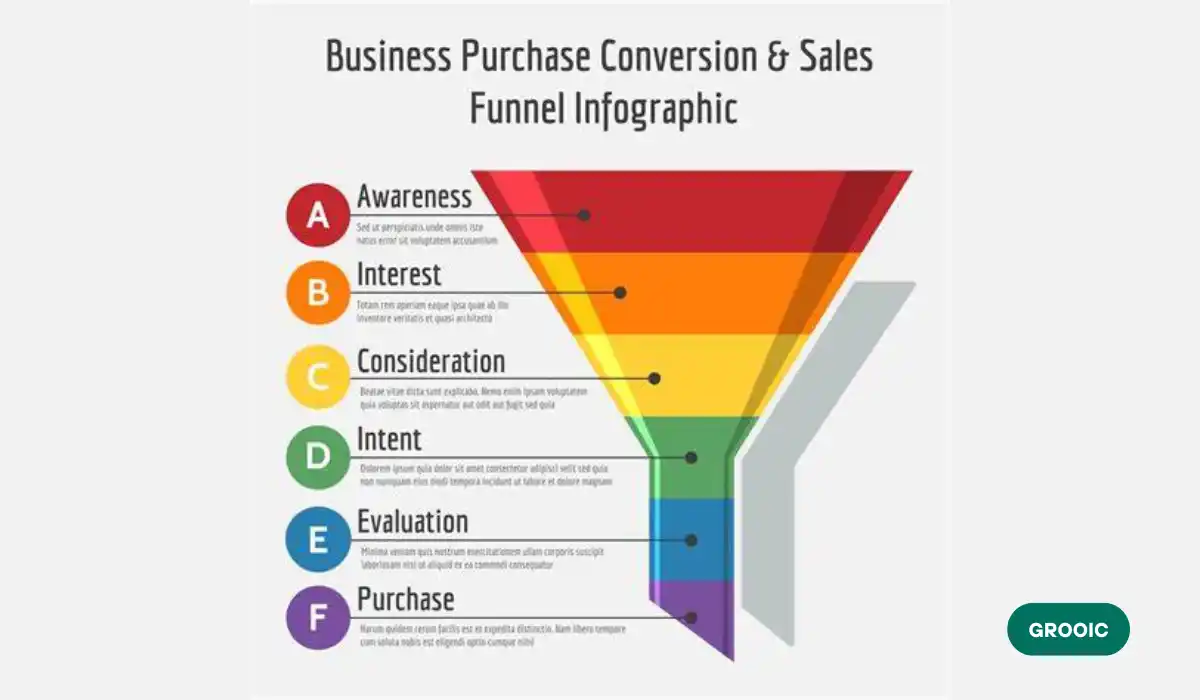Are you confused about which microsite vs website is better for the business you run?
Understanding the particular benefits of each is essential. Websites function as broad digital hubs, while microsites provide targeted, campaign-specific material.
Let’s figure out which one will improve your approach.
Table of Contents
What is a microsite?
A microsite is a brief, stand-alone webpage created to highlight a particular,
- Promotion,
- Item, or
- Idea.
A microsite, in contrast to a full-fledged website, is usually independent of a brand’s primary website and frequently has its own domain or subdomain.
A microsite is designed to provide a customized user experience for a particular demographic, which makes it a useful tool for,
- Branding,
- Lead generation and
- Focused marketing.
Microsite Definition
A microsite is a tiny, niche website designed to concentrate on one particular,
- Subject,
- Item or
- Marketing initiative.
It functions separately from a brand’s primary website and is frequently used to send audience-specific content.
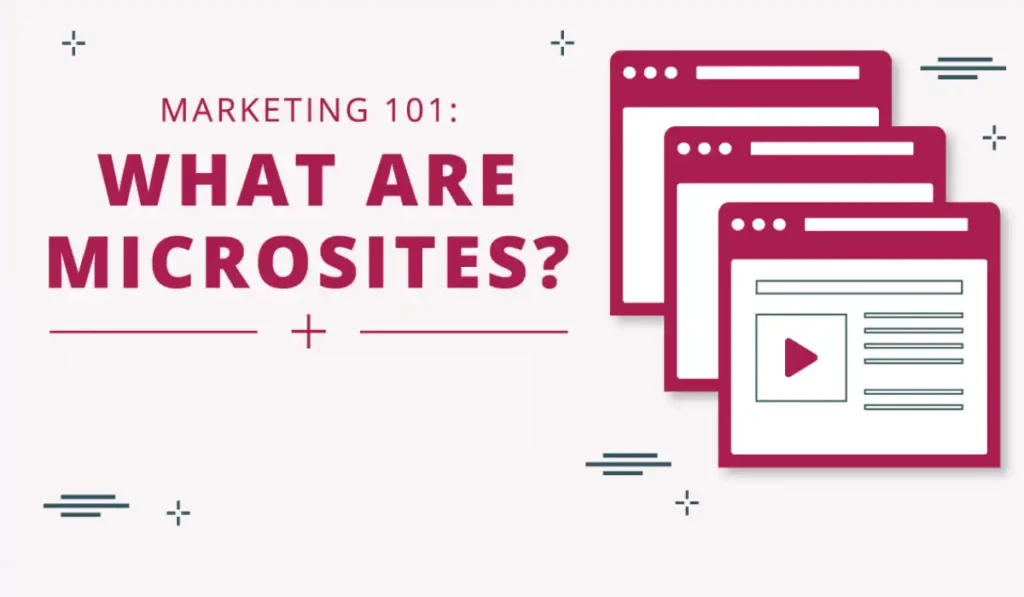
With the aim of offering a distinct user experience, microsites enable firms to advertise special products or deliver targeted messages without the constraints or interruptions of their main website.
Define Microsite or Key Criteria and Benefits of a Microsite
Concentrated Content: With microsites, brands may focus on a particular message or item. Better engagement results from offering material that is extremely relevant to the intended audience.
Analytical output: 30% (approximately)
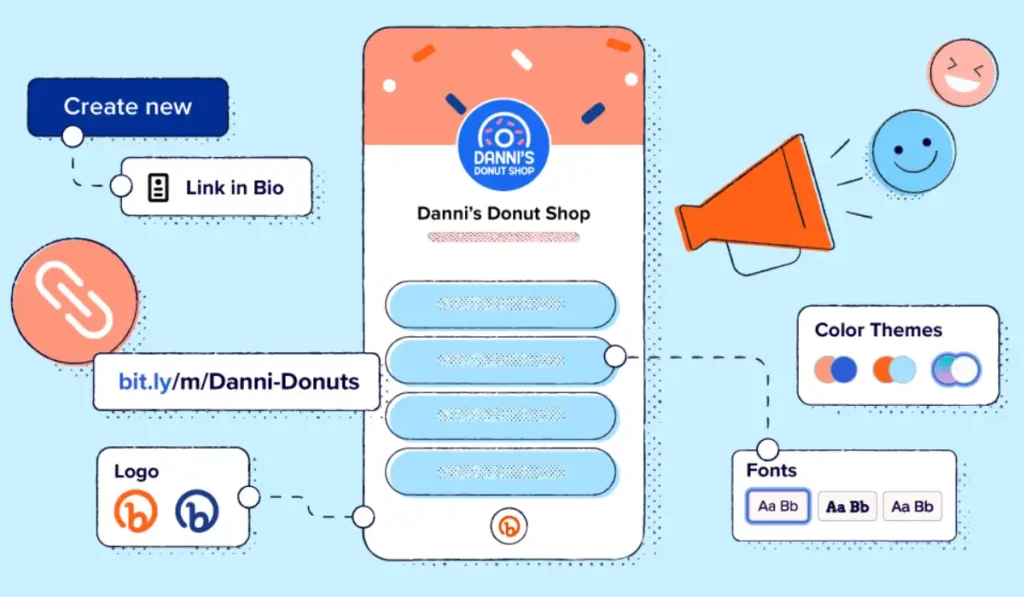
Flexibility: The structure and branding restrictions of the main website do not restrict the creative freedom that microsites offer. More creative designs and user experiences are made possible by this versatility.
Analytical output: 20% (approximately)
Rapid Deployment: Compared to entire websites, microsites can be designed and launched more quickly because they are typically smaller and more focused.
Analytical output: 15% (approximately)
SEO Benefits: By raising its search engine ranks for particular keywords, a well-optimized microsite can get more relevant traffic.
Analytical output: 20% (approximately)
Analytics and Insights: Microsites can be monitored independently, offering precise information on user behavior, conversion rates, and general campaign or product performance.
Analytical output: 15% (approximately)
When to Use a Microsite?
- Product launches: Product launches are ideal for showcasing a new offering through targeted advertising and content creation.
- Events and Campaigns: Perfect for advertising campaigns, competitions, or occasions where you wish to generate excitement.
- Audience Segmentation: Targeting a certain audience segment without making changes to the main website is possible with audience segmentation.
A landing page is a focused, web page designed to capture leads or drive specific actions. Often used in marketing campaigns to convert visitors into customers.
Pros and Cons of a Microsite
To maximize conversions, user interaction, relevant content, and focused calls to action must be optimized to guide visitors to the desired action.
| Pros | Cons |
| Highly focused content. | Requires separate maintenance. |
| Creative freedom. | Can dilute brand identity if not aligned. |
| Quick to deploy. | Might confuse users if not linked well. |
| Improved SEO for specific keywords. | Additional costs for domain/hosting. |
| Clear analytics and insights. | Potentially lower overall traffic. |
When you need to communicate a specialized message to a specific audience, a microsite is an effective tool.
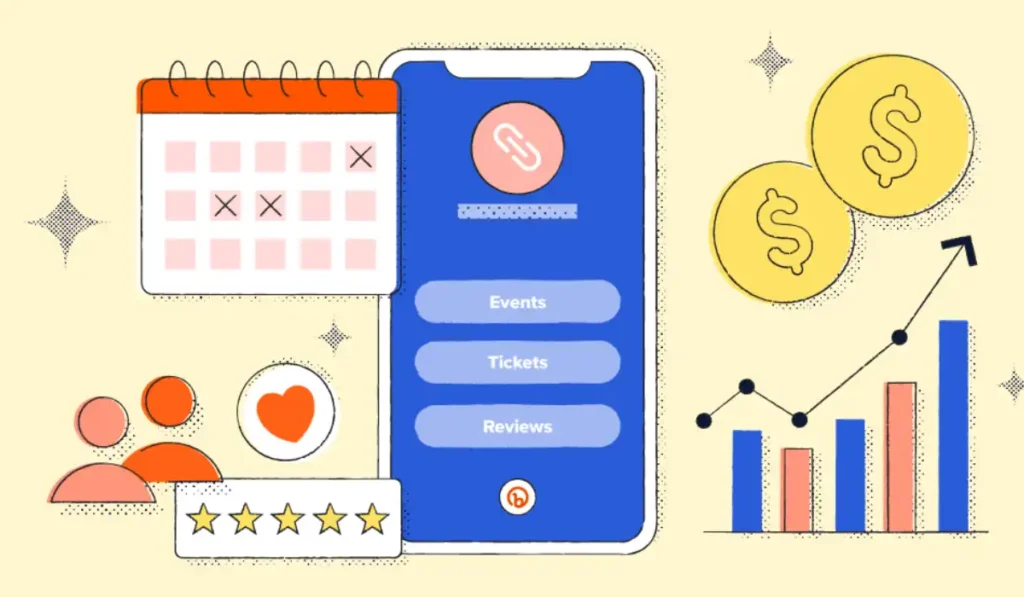
Its advantages include,
- Improved SEO,
- Flexible creativity and
- Targeted content.
But there are drawbacks as well, such as upkeep and possible brand dilution.
What is a Website?
A website is an all-inclusive digital platform that functions as the principal online presence for an individual,
- Business, or
- Organization.
Usually comprising several pages, it covers a range of,
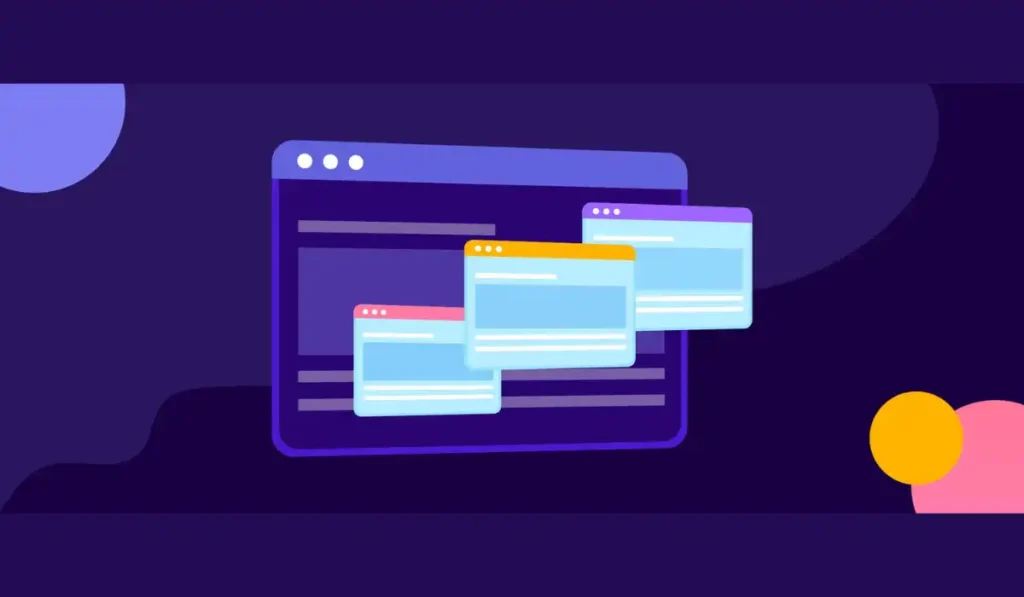
- Subjects,
- Offerings,
- Goods or
- Data.
Websites are intended to serve as a central location where customers can engage with a,
- Brand,
- Access a variety of content, and
- Take activities like making purchases, reading blogs, or getting in touch with the business.
Key Criteria and Benefits of a Website
Extensive Content: To meet the various demands of users, websites offer a wide variety of information. This provides in-depth insights and aids in building a brand’s authority.
Analytical output: 30% (approximately)
Brand Consistency: All pages of a website are made to have the same messaging, images, and user experience because websites are made to represent a brand’s identity.
Analytical output: 25% (approximately)
User Experience: A well-designed website facilitates user navigation, which makes it simpler for users to locate the information they require. This raises user happiness and engagement levels.
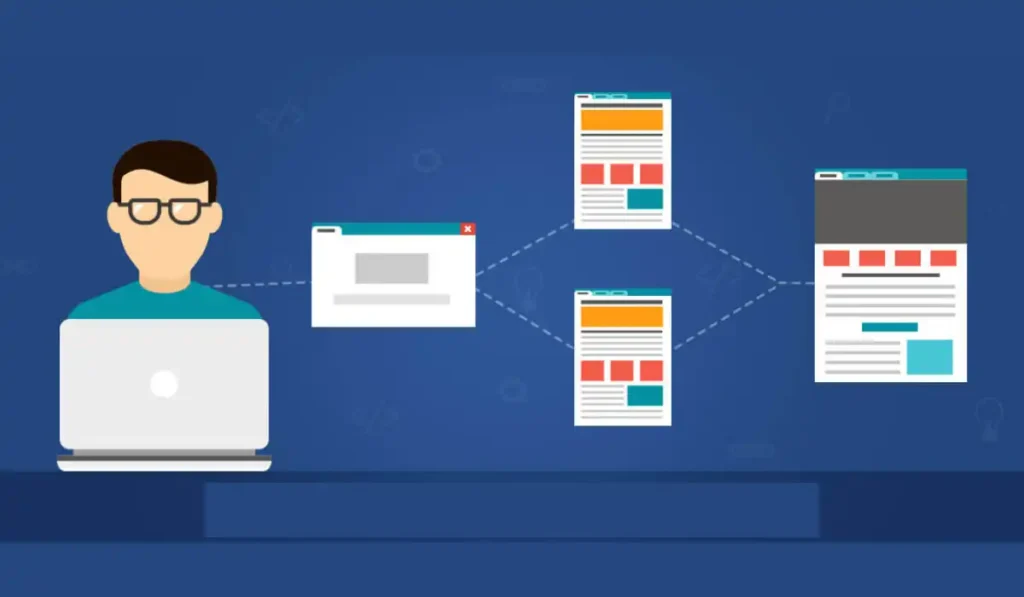
Analytical output: 20% (approximately)
SEO Optimisation: Websites are the best medium for optimizing a large number of keywords, increasing their overall visibility in search results, and generating natural traffic.
Analytical output: 15% (approximately)
Scalability: In response to shifting business requirements, websites can expand and change over time, including new features, content, and functionalities.
Analytical output: 10% (approximately)
When to Use a Website?
- Business Foundations: In order to build an online presence, a website is necessary since it gives potential customers access to information about the company’s products, services, and brand.
- E-commerce: A website is a vital tool for companies that sell goods or services online in order to display their offerings, process payments, and maintain client connections.
- Content Marketing: Content marketing is great for posting blogs, articles, case studies, and other types of material that gradually draw in and keep readers interested.
Pros and Cons of a Website
Optimizing a website for SEO not only improves search rankings but also enhances conversion rate optimization (CRO) by delivering targeted, relevant content that drives user actions.
| Pros | Cons |
| Comprehensive and versatile. | Higher development and maintenance costs. |
| SEO optimization for broad keywords. | Can become complex and overwhelming. |
| Enhances brand consistency. | Requires regular updates and management. |
| SEO optimisation for broad keywords. | Slower to develop and deploy. |
| Scalable to grow with business needs. | May require more resources to maintain. |
Any brand hoping to have a credible, long-lasting internet presence needs a website. It provides thorough,
- Content,
- Unified branding and
- Expansion and evolution flexibility.
Ongoing maintenance, thorough planning, and a larger resource commitment are nevertheless necessary.
Microsite components and functionality
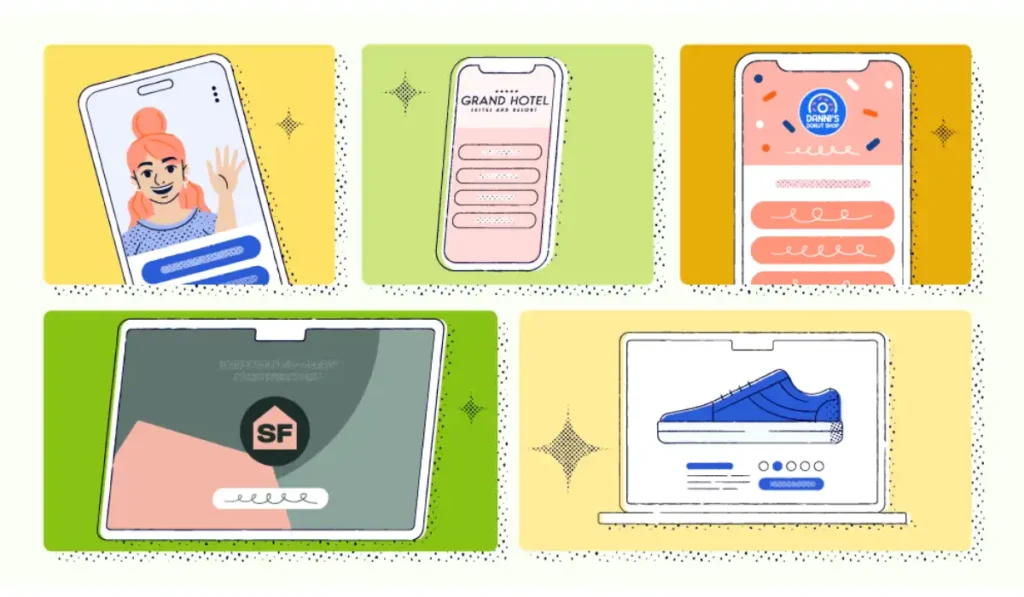
A microsite is a simple, stand-alone website platform created for certain goals such as,
- Promotions,
- Events or
- Campaigns.
Usually, it is made up of a few essential parts that come together to provide a targeted user experience.
Cross-selling examples include suggesting related products or services to customers, like offering a phone case when a customer buys a smartphone, to improve their overall purchase experience.
Key Components of a Microsite
Homepage: The main section of the website that explains its goal and typically has an eye-catching design and a compelling call to action (CTA).
Content parts: A microsite may have one or more parts with in-depth information, like,
- Product descriptions,
- User reviews or
- Event schedules.
Every part is totally focused on the primary objective.
Interactive Elements: You may collect data and engage consumers with features like,
- Interactive infographics,
- Quizzes and
- Forms.
These components are frequently made to encourage particular behaviors, such as downloads or sign-ups.
Multimedia Content: To create an immersive experience, websites often make use of,
- Animations,
- Photos and
- Videos.
This facilitates drawing the audience and getting the point across quickly.
Navigation: Users can locate the information they need with ease because of the,
- Straightforward,
- Intuitive navigation.
This could consist of a scroll-based navigation system or a top menu.
Analytics technologies: By tracking user interactions, integrated technologies offer information on engagement and conversion rates. This information is essential for assessing the success of the microsite.
Functionality of a Microsite
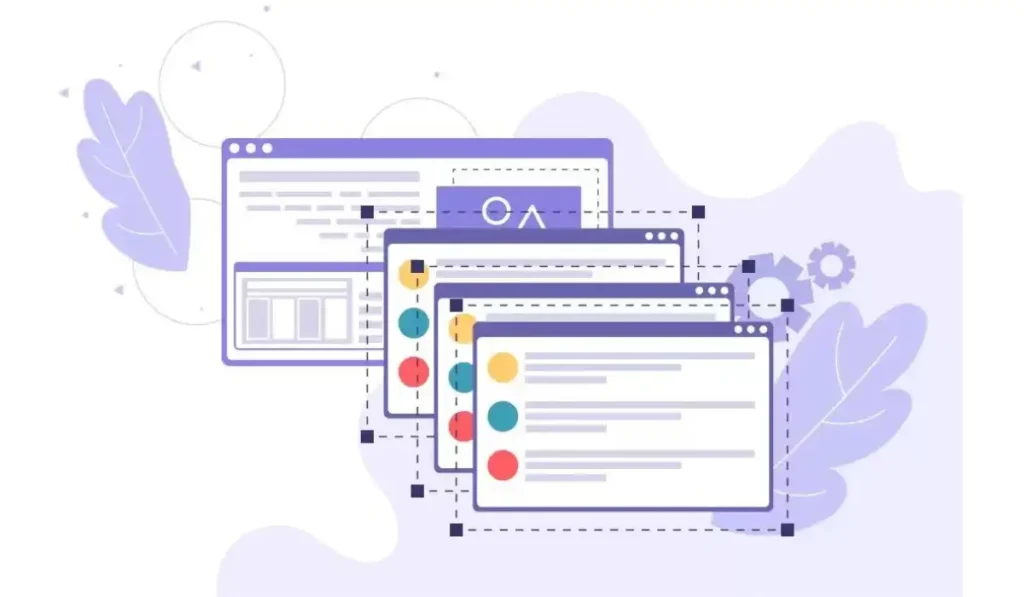
- Targeted Messaging: Each element is designed with a particular audience in mind, making the message both compelling and obvious. Analytical output: 35% (approximately)
- Lead generation: To collect leads and turn visitors into clients, microsites frequently have forms and call-to-actions (CTAs). Analytical output: 25% (approximately)
- SEO Optimisation: Microsites can be optimized for particular keywords, which can drive focused organic traffic, despite their smaller scope. Analytical output: 20% (approximately)
- Campaign Tracking: With analytics integration, user behavior and campaign performance can be closely monitored, allowing for real-time strategy optimization. Analytical output: 20% (approximately)
Pros and Cons of Microsite Components and Functionality
Implementing personalized user experiences, optimizing landing pages, and using clear CTAs are key strategies to improve conversion rates.
| Pros | Cons |
| Highly focused user experience | Limited content scope |
| Engaging and interactive elements | Potentially higher bounce rates |
| Fast load times due to streamlined content | Requires separate maintenance |
| Clear, actionable insights from analytics | May not be suitable for complex needs |
| Effective for short-term campaigns | Less comprehensive than full websites |
Microsites are effective tools for providing relevant, interesting material with a clear purpose in mind. They are perfect for,
- Campaigns,
- Product launches or
- Events since they provide simplicity, speed, and a targeted user experience.
They might, however, also need specialized maintenance and resources in addition to having scope limits.
The difference between a website and a microsite
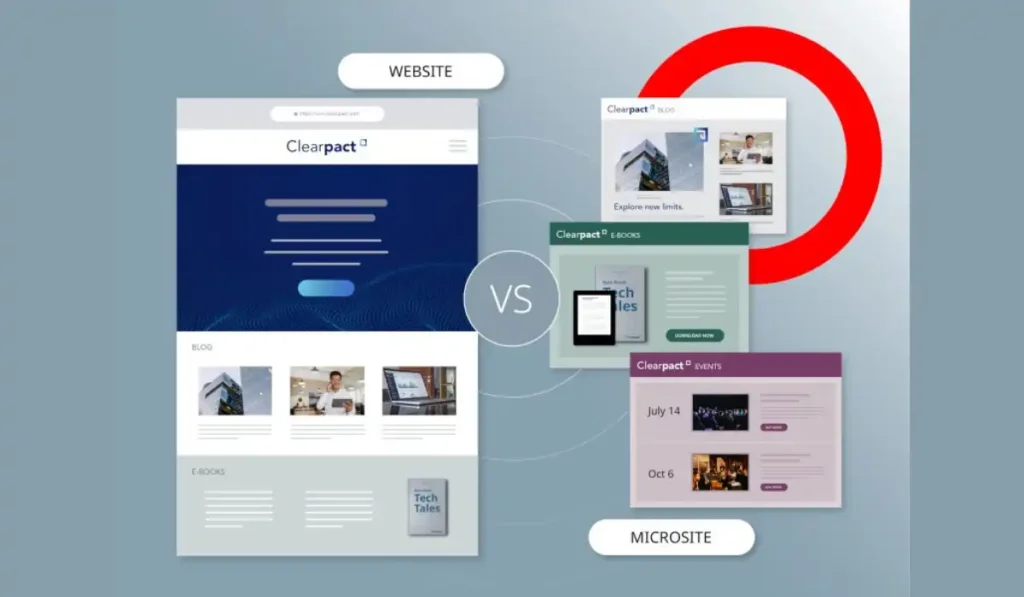
Website
Brands digital presence centers on their websites. It usually has several pages on various,
- Topics,
- Products,
- Services and
- Information.
Websites provide a comprehensive and uniform user experience with services like,
- Blogs,
- E-commerce and
- Contact information.
Built to support long-term goals and corporate growth.
Microsite
On the other hand, a microsite is a smaller, independent website for,
- Campaign,
- Product or
- Event.
Microsites, unlike websites, are temporary and focused, providing a highly targeted user experience. It allows creative freedom and faster deployment by operating on its own domain or subdomain for short-term engagement.
Microsites and SEO
Microsites can boost SEO by targeting keywords, content, and audiences. How well they are planned and implemented affects SEO.
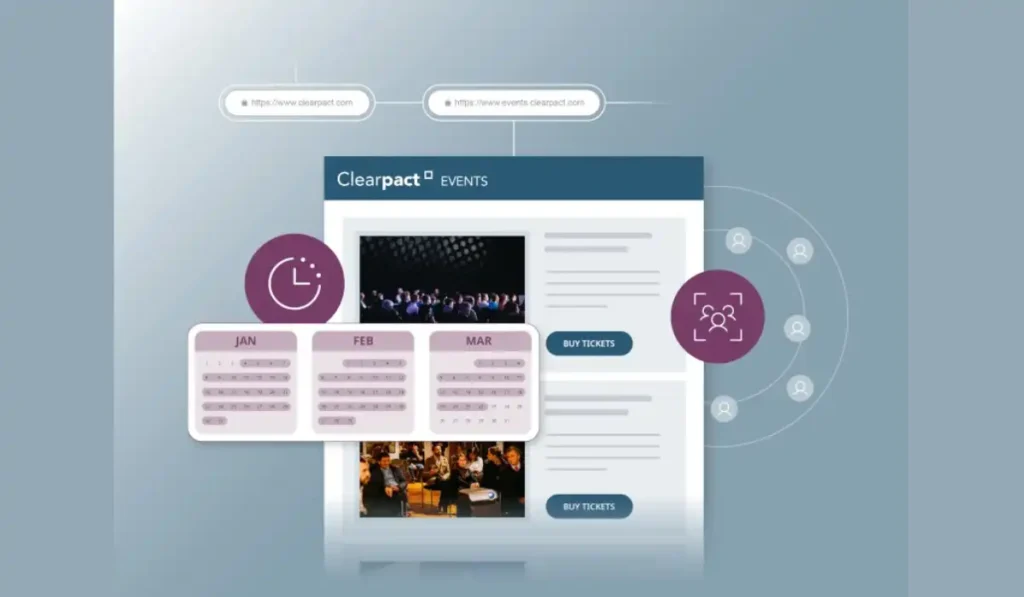
How Microsites Benefit SEO
Keyword Targeting: Microsites let you target specialty or long-tail keywords that do not fit the main website. You can rank higher for targeted searches by optimizing the microsite for these terms.
Analytical output: 30% (approximately)
Information Relevance: Microsites focus on one topic or campaign, therefore their information is relevant to related search searches. Search engines may rank the site higher due to relevance.
Analytical output: 25% (approximately)
Link Building: A well-designed microsite can get backlinks from related sites. If properly linked, these inbound links can improve the microsite’s authority, indirectly benefiting your main website.
Analytical output: 15% (approximately)
User Engagement: Interactive microsites can minimize bounce rates and increase dwell times, which boosts SEO rankings.
Analytical output: 20% (approximately)
Local SEO: Local keywords and content can boost local search results for microsites targeting certain locations.
Analytical output: 10% (approximately)
Pros and Cons of Microsites in SEO
| Pros | Cons |
| Targeted keyword optimization | Risk of duplicate content issues |
| Highly relevant and focused content | Lower initial domain authority |
| Potential for strong local SEO impact | Link dilution across domains |
| Increased user engagement and dwell time | Requires ongoing SEO maintenance |
| Opportunity for creative, viral content | May not benefit the main site’s SEO |
Micro Website Examples
Micro websites, also known as microsites, are created for particular objectives like events, product debuts, and marketing campaigns.
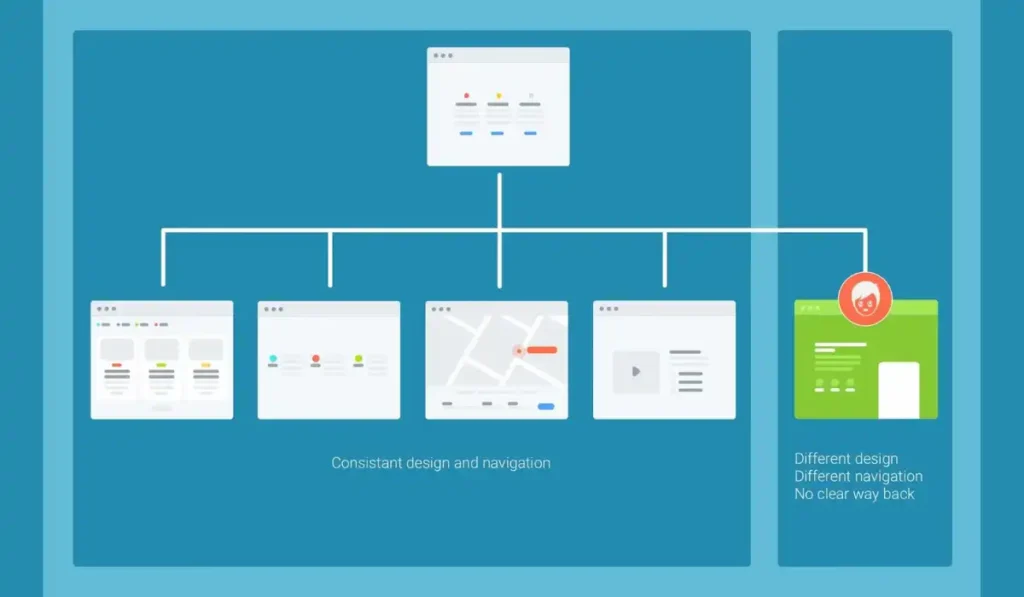
Here are a few noteworthy instances from various industries:
Nike – “Nothing Beats a Londoner”
- Purpose: Promote Nike’s products and engage London-based athletes.
- Features: Interactive content, videos, and a personalized experience focusing on local athletes and events.
- URL: Nike London
Coca-Cola – “Share a Coke”
- Purpose: Drive engagement with Coca-Cola’s personalized bottles campaign.
- Features: Customizable Coke bottle labels with names, a photo-sharing tool, and a social media integration.
- URL: Share a Coke
Google – “Year in Search”
- Purpose: Summarize Google’s most popular search trends for the year.
- Features: Interactive videos, infographics, and a visual recap of the year’s major events and trends.
- URL: Google Year in Search
Heineken – “The City”
- Purpose: Promote Heineken’s global brand campaign.
- Features: A digital cityscape with interactive elements highlighting various aspects of Heineken’s brand values and campaigns.
- URL: Heineken The City
Apple – “Shot on iPhone”
- Purpose: Showcase photos and videos taken with iPhone cameras.
- Features: High-quality images and videos submitted by users, with stories behind each shot.
- URL: Shot on iPhone
Airbnb – “Belong Anywhere”
- Purpose: Promote Airbnb’s new branding and travel experiences.
- Features: Beautiful imagery, user-generated content, and interactive maps showing unique stays around the world.
- URL: Belong Anywhere
Key Characteristics of These Examples
- Targeted Objectives: Every microsite is created with a certain campaign or goal in mind.
- Interesting Content: Interactive features and eye-catching layouts draw in and hold the attention of users.
- Brand Alignment: They strongly correspond with the marketing tactics and overarching messaging of the brand.
- Short-Term Campaigns: Usually used for one-time events or promotions that are separate from the primary website.
Types of Website Examples
There are many distinct types of websites, each intended to fulfill a certain purpose and achieve a different goal.
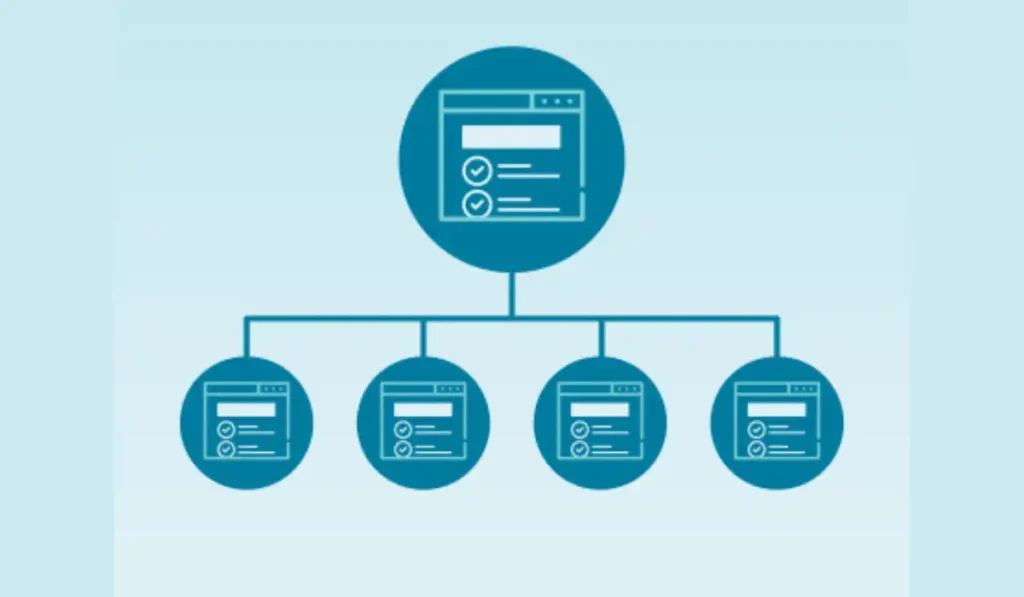
The following list of typical website kinds includes examples of each:
Corporate Website
- Purpose: To offer details regarding a business, its offerings, and its principles. Sections like “about us,” “services,” and “contact information” are frequently included.
- Example: Apple
Apple’s corporate website features details on the company, its goods, and services.
E-commerce Website
- Purpose: To make online sales of goods and services. Features including shopping carts, payment gateways, and product listings are included.
- Example: Amazon
Along with a wide selection of goods, Amazon also provides user reviews and an integrated buying experience.
Portfolio Website
- Purpose: To exhibit a person’s or company’s work; creative people frequently utilize this to highlight their projects and abilities.
- Example: Behance
Creative workers may showcase their portfolios and connect with other professionals in the field on Behance.
Blog
- Purpose: To consistently publish articles, posts, or updates on a range of subjects. Features like categories, comments, and subscription choices are frequently included.
- Example: WordPress Blog
The WordPress blog offers advice, insights, and platform updates along with information about site development and blogging.
News Website
- Purpose: To deliver up-to-date information on a range of subjects, such as entertainment, sports, and politics.
- Example: BBC News
BBC News provides in-depth coverage of breaking news and updates from across the world in a number of categories.
Educational Website
- Purpose: To provide educational content, resources, or courses. It can range from online courses to informative articles and tutorials.
- Example: Khan Academy
Khan Academy offers free educational resources, lessons, and practice exercises across multiple subjects.
Non-Profit Website
- Purpose: Promote and support a non-profit is mission. It often lists donations, volunteer opportunities, and the organization’s influence.
- Example: Charity: Water
Community Website
- Purpose: To promote community or interest group communication. Forums, user profiles, and discussion boards are common.
- Example: Reddit
Users can debate many subjects and communities on Reddit using user-generated content and forums.
FAQs
When should I use a microsite?
When you need to divert your main website’s attention to concentrate on a particular,
1. Campaign,
2. Product or
3. Event, use a microsite.
It works well for focused marketing campaigns that have a single, distinct message.
What are the advantages of a microsite?
With the help of microsites,
1. Targeted content,
2. With creative flexibility and
3. With speedy deployment,
You may successfully interact with a particular audience. They can improve SEO for specialized keywords and offer transparent metrics as well.
Can I use a microsite as a landing page for my website?
Yes, a microsite can function as a landing page, particularly for items or campaigns that require unique branding and messages.
Compared to a typical website page, it offers greater customization and focused user experiences.
What is the purpose of a microsite?
Creating a dedicated, targeted online presence for a particular,
1. Marketing initiative,
2. Product launch, or
3. The event is the goal of a microsite.
It aids in achieving particular,
1. Marketing goals,
2. Increasing engagement and
3. Delivering relevant content.

